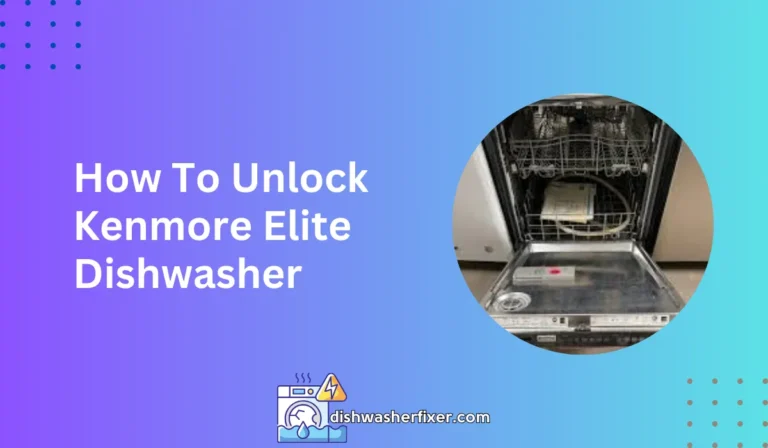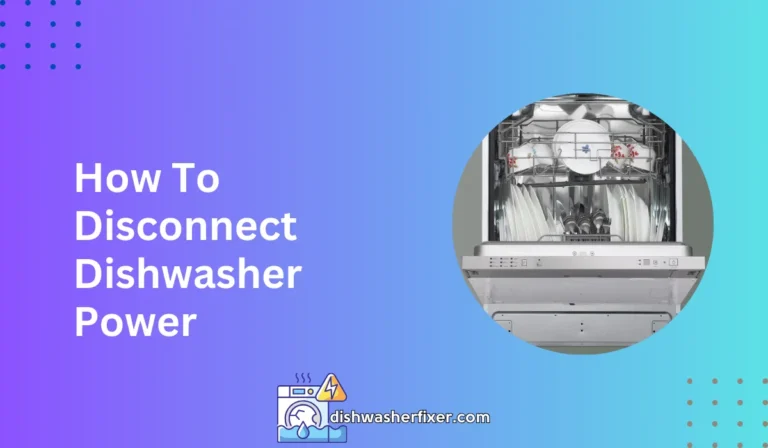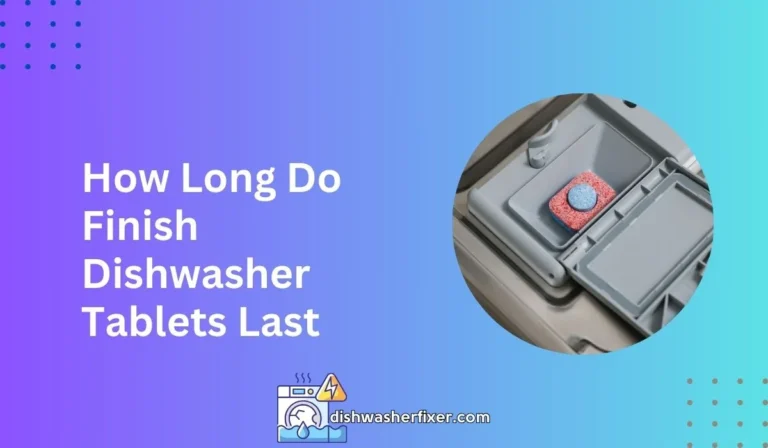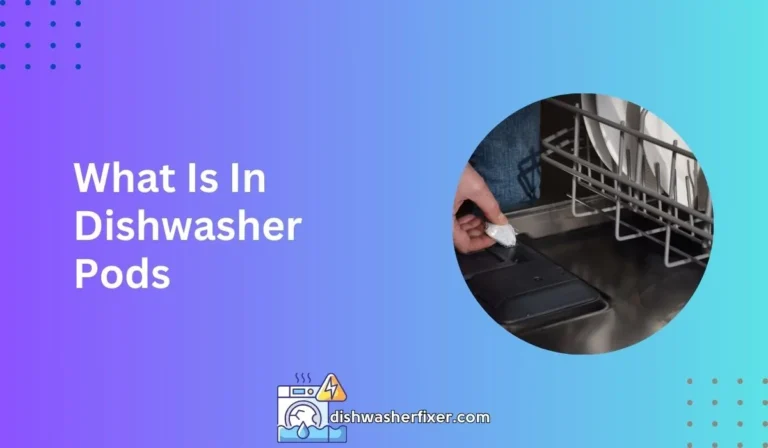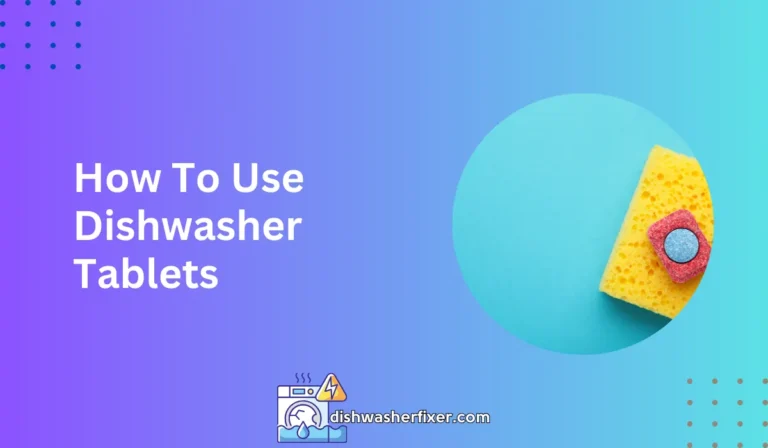Why Is My Dishwasher Leaking From Underneath? Quick Fixes!
Your dishwasher may be leaking from underneath due to a loose or damaged water hose, a faulty pump seal, or a cracked drain pan. Check these components for wear or damage and replace if necessary to stop the leak. Regular maintenance can prevent such issues.
Common Causes of Dishwasher Leaks

Understanding Door Seal Failures
The rubber gasket around your dishwasher door is crucial for keeping water inside during a wash cycle. Over time, these seals can become worn or damaged, leading to leaks.
Regular inspection can reveal cracks, warping, or brittleness, all of which signal the need for a replacement.
Additionally, trapped food particles or debris can prevent a tight seal, so keeping the gasket clean is just as important as its physical condition.
Identifying Faulty Water Inlet Valves
The water inlet valve is responsible for allowing water into your dishwasher. If it becomes defective, it might not close properly and could cause leaking from underneath the appliance.
Signs of a faulty valve include unusual noises during the fill cycle or a dishwasher that won’t fill at all. A professional assessment may be necessary to confirm if the valve is the source of the leak.
Loose or Damaged Hoses and Clamps
Hoses and clamps inside your dishwasher are subject to wear and tear. They can become loose, corroded, or damaged over time.
It’s essential to check these components regularly, as a small leak can quickly become a significant problem. Look for signs of moisture, rust, or damage on the hoses and ensure the clamps are tight and secure.
Issues with Pumps and Seals
The pump in your dishwasher circulates water and can be a culprit in leaks when its seal fails.
A leaking pump can manifest as a puddle directly under the center of the dishwasher. If the pump’s seal is compromised, it will likely need to be replaced to restore the integrity of the dishwasher’s water circulation system.
Problems with Overfilling and Float Switches
A float switch regulates the water level in your dishwasher. If this switch malfunctions, it might cause the dishwasher to overfill, leading to leaks from underneath the unit.
The float switch needs to move freely and maintain proper calibration to function correctly. Obstructions or a failure in the switch itself can lead to overfilling issues.
Troubleshooting Steps to Identify the Leak Source

Inspecting Door Seals for Damage or Debris
Begin by thoroughly inspecting the door seals. Look for any obvious signs of wear or tears that could allow water to escape.
It is also essential to clean any debris from the seal area, as even small particles can prevent a watertight seal when the door is closed.
Checking the Water Inlet Valve
Examine the area around the water inlet valve for dampness or drips, especially when the dishwasher is filling.
If you detect moisture, it may be time to consider replacing the valve. Make sure to turn off the water supply before attempting any inspections.
Examining Hoses and Clamps
Carefully assess all the hoses and clamps in the dishwasher. Look for any loose connections or signs of wear that could indicate a leak. Make sure that all the clamps are secure, as a loose clamp can easily allow water to escape.
Assessing the Condition of the Pump and Pump Seals
Check the pump and its seals for any signs of leakage. If the pump is leaking, it will need to be replaced or repaired by a professional.
A visual inspection will often reveal whether there is a problem with the seals, but sometimes the issue may not be apparent until the pump is removed.
Testing the Float Switch for Proper Operation
Ensure that the float switch is operating correctly by manually lifting it to see if it triggers the pump.
If the switch is not functioning, it could cause the dishwasher to overfill. In this case, the switch will need adjustment or replacement to ensure proper operation.
DIY Repair Tips for Fixing Leaks

Replacing Door Gaskets and Ensuring Proper Door Alignment
If your inspection reveals a damaged door gasket, remove the old one and replace it with a new seal. Ensure that the door aligns correctly with the frame to prevent future leaks. Sometimes adjusting the latch can also improve the seal.
Repairing or Replacing a Faulty Water Inlet Valve
A malfunctioning water inlet valve must be replaced to stop leaks. After turning off the water supply and disconnecting the power, remove the old valve and install a new one, making sure to follow the manufacturer’s directions for your specific dishwasher model.
Securing or Replacing Hoses and Clamps
If a hose or clamp is the source of the leak, it may be possible to simply tighten the clamp.
However, if a hose is damaged, it’s best to replace it entirely to ensure a long-term fix. Always use manufacturer-approved parts for the best results.
Servicing or Replacing a Faulty Pump and Seal
If the pump or seal is defective, replacement parts can be installed. This task can be complex and might require professional help, especially if it involves disassembling the dishwasher to access the pump.
Adjusting or Replacing the Float Switch
If the float switch is not functioning correctly, try to adjust it first. If adjustment does not solve the problem, the switch will need to be replaced. Refer to your dishwasher’s manual for guidance on how to access and replace the float switch.
FAQs About Dishwasher Leaks
Why is my dishwasher leaking from underneath?
Leakage from underneath a dishwasher may be due to loose or damaged water hoses, a faulty pump seal, or a cracked drain pan. It’s important to inspect these components for any signs of wear or damage.
How do I check for a loose or damaged water hose in my dishwasher?
Inspect the water inlet and drain hoses located at the back or bottom of your dishwasher for any signs of looseness or damage such as cracks or splits, and tighten or replace as needed.
What is a pump seal, and how can it cause a dishwasher to leak?
A pump seal is a component that prevents water from leaking out of the dishwasher pump. If it’s faulty or worn out, it can cause water to leak from the base of the machine.
How can a cracked drain pan cause my dishwasher to leak from underneath?
A cracked drain pan can allow water that is meant to be contained and drained out to leak onto the floor underneath the dishwasher.
Can regular maintenance prevent leaks from the underside of a dishwasher?
Yes, regular maintenance, including checking and replacing hoses, seals, and the drain pan when necessary, can prevent leaks from developing under your dishwasher.
Final Thoughts
Leaks under your dishwasher are often due to issues with the water hose, pump seal, or drain pan. These components should be inspected for damage or wear and replaced as needed.
Regular upkeep is essential to forestall such leaking problems and ensure the longevity of your appliance.
